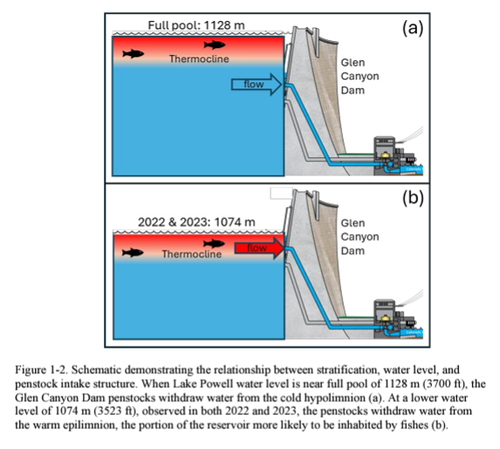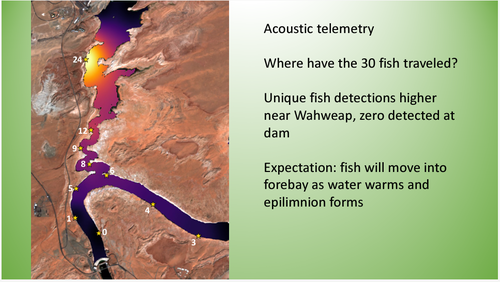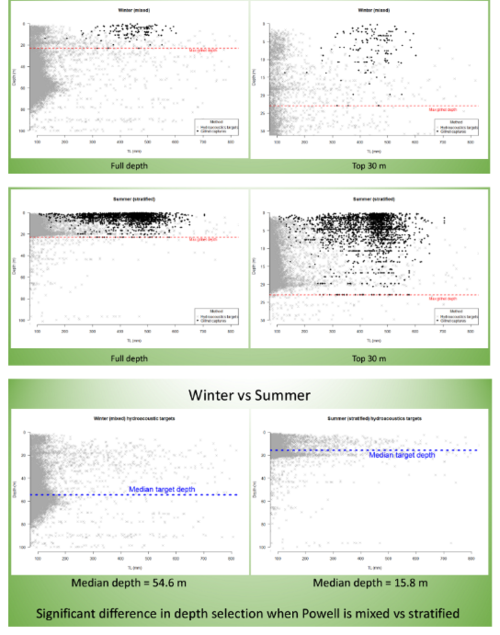Difference between revisions of "Entrainment"
Cellsworth (Talk | contribs) |
Cellsworth (Talk | contribs) |
||
| Line 17: | Line 17: | ||
</table> | </table> | ||
| + | [[Image:Entrainment.png|thumb|center|500px| ]] | ||
<!-- | <!-- | ||
| Line 23: | Line 24: | ||
|style="width:60%; font-size:120%;"| | |style="width:60%; font-size:120%;"| | ||
| + | ==Entrainment of warmwater nonnative fish through Glen Canyon Dam== | ||
| + | |||
| + | When the reservoir was cold (<10 °C) and well-mixed, most fishes selected gently sloping habitat such as that found in Wahweap Bay (5 km from GCD), and thus winter entrainment risk is low for most species. When the reservoir was stratified (>20 °C surface temp.) fish were active in the forebay epilimnion within meters of the dam, increasing entrainment when the dam penstock is positioned within the epilimnion, as it was during our study, rather than below the thermocline when the reservoir water level is higher. | ||
| + | |||
| + | |||
| + | Smallmouth Bass Micropterus dolomieu) may survive entrainment at rates above 50% at low water levels, with survival expected to decrease as the water level rises, but remaining problematically high across all water levels where entrainment is expected. Other fishes may survive entrainment at higher rates, depending on physiology. | ||
| + | |||
| + | |||
| + | Minimizing successful nonnative fish passage through GCD is best achieved through maintenance of water levels higher than those in 2022 and 2023, which would decrease both entrainment and survival of entrainment. [https://digitalcommons.usu.edu/cgi/viewcontent.cgi?article=1304&context=etd2023] | ||
|}<!-- | |}<!-- | ||
| Line 40: | Line 50: | ||
|style="color:#000;"| | |style="color:#000;"| | ||
| + | [[Image:Forebay_telemetry.png|thumb|center|500px| ]] | ||
| + | |||
| + | [[Image:Forebay sonor.png|thumb|center|500px| ]] | ||
|} | |} | ||
Revision as of 15:03, 20 September 2024
|
|
Entrainment of warmwater nonnative fish through Glen Canyon DamWhen the reservoir was cold (<10 °C) and well-mixed, most fishes selected gently sloping habitat such as that found in Wahweap Bay (5 km from GCD), and thus winter entrainment risk is low for most species. When the reservoir was stratified (>20 °C surface temp.) fish were active in the forebay epilimnion within meters of the dam, increasing entrainment when the dam penstock is positioned within the epilimnion, as it was during our study, rather than below the thermocline when the reservoir water level is higher.
|
| -- |
-- |
-- |
|---|


